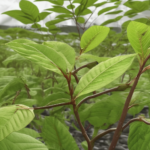Will Split Ends Stop Hair Growth? The Truth About Your Hair’s Health
Introduction
We’ve all been there – standing in front of the mirror, examining those frayed, splitting ends of our hair, and wondering if they’re sabotaging our dreams of long, healthy locks. The question “Will split ends stop hair growth?” has sparked countless debates and concerns among people trying to achieve their hair goals.

The Problem: Split Ends and Their Impact
Split ends are more than just an aesthetic nuisance. They represent damaged hair that can lead to bigger problems if left unchecked. Here’s what many people experience:
1. Constant breakage
2. Difficulty growing hair past a certain length
3. Dull, lifeless-looking hair
4. Tangling and matting
5. Uneven hair texture
According to recent hair care studies, up to 87% of women report experiencing split ends as their primary hair concern. The average person’s hair grows about 1/2 inch per month, but with split ends, it might seem like your hair isn’t growing at all.
The Agitation: The Real Impact of Split Ends
Let’s address the elephant in the room: Split ends don’t technically stop hair growth. Hair grows from the follicles in your scalp, not from the ends. However, split ends can create the illusion of stunted growth and cause real problems that affect your hair’s overall health and length retention.
Here’s what happens when split ends are left untreated:
1. Progressive Damage
2. Split ends travel up the hair shaft
3. One split can lead to multiple splits
4. The damage becomes increasingly difficult to repair
5. Breakage Issues
6. Hair breaks before reaching desired length
7. Uneven hair lengths
8. Thinning appearance at the ends
9. Styling Challenges
10. Difficulty maintaining hairstyles
11. Increased tangling
12. More time spent on daily maintenance

The Solution: Comprehensive Split End Management
Understanding Split Ends
Split ends occur when the protective outer layer of your hair (the cuticle) becomes damaged, exposing the inner cortex. This damage can be caused by:
1. Heat styling
2. Chemical treatments
3. Environmental factors
4. Mechanical damage from brushing
5. Poor hair care practices
6. Prevention Strategies
7. Regular Trimming Schedule
8. Get trims every 8-12 weeks
Protective Hair Care
1. Use heat protectants before styling
2. Limit heat tool usage
3. Avoid chemical treatments when possible
4. Use silk or satin pillowcases
5. Proper Hair Care Techniques
6. Gentle detangling methods
7. Use appropriate hair tools
8. Regular deep conditioning
9. Protect hair while sleeping
Treatment Options
1. Regular salon trims
2. Deep conditioning treatments
3. Professional bond-building treatments
4. Split end mending services
5. At-Home Care
6. Use split end specific products
7. Regular moisturizing treatments
8. Protective styling
9. Gentle handling techniques
Hair Growth Facts
1. Hair grows approximately 0.5 inches (1.25 cm) per month
2. Growth occurs from the follicle, not the ends
3. Healthy hair can retain more length
5. Damage occurs gradually over time
6. Environmental factors play a significant role
7. Prevention is more effective than treatment
8. Practical Tips for Long-Term Success
9. Daily Hair Care Routine
10. Gentle brushing techniques
11. Proper washing methods

Product Selection
1. Quality shampoo and conditioner
2. Leave-in treatments
3. Heat protectants
4. Split end specific products
5. Lifestyle Adjustments
6. Balanced diet for hair health
7. Proper hydration
8. Stress management
9. Regular exercise
Common Myths
“Trimming makes hair grow faster”
Truth: Trimming doesn’t affect growth rate but prevents breakage
“Split ends can be permanently repaired”
Truth: Once split, ends need to be cut; products can only temporarily seal them
“Natural oils can cure split ends”
Truth: Oils can help prevent splits but can’t repair existing damage
Creating a Maintenance Plan
1. Weekly Schedule
2. Deep conditioning treatments
3. Protective styling
4. Gentle cleansing routine
5. Moisturizing treatments
Monthly Schedule
1. Length check
2. End inspection
3. Treatment assessment
4. Product evaluation
5. Quarterly Schedule
6. Professional trim
7. Hair health assessment
8. Routine adjustment
9. Goal evaluation
10. Professional Recommendations

Conclusion
While split ends don’t directly stop hair growth, they can significantly impact your hair’s ability to retain length and maintain health. By understanding the nature of split ends and implementing proper care techniques, you can minimize their occurrence and maximize your hair’s growth potential.
Remember that healthy hair growth is a journey, not a destination. It requires consistent care, patience, and the right approach. By following the strategies outlined in this guide, you can work towards achieving and maintaining the healthy, long hair you desire.
The key is to be proactive rather than reactive in your hair care routine. Prevention is always better than trying to repair damage after it occurs. With proper care and attention, you can minimize split ends and optimize your hair’s growth potential.
Take action today by implementing these strategies, and you’ll be on your way to healthier, stronger, and longer hair. Your hair’s health is in your hands – make the most of it!

